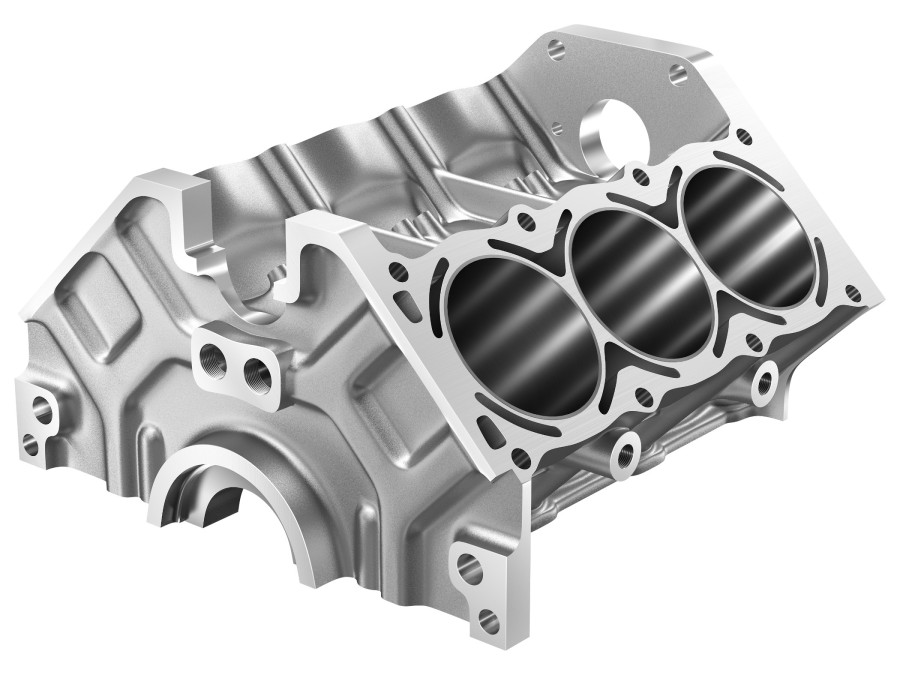It’s said that life is a marathon, not a sprint. For automotive manufacturers, longer lasting tooling solutions are integral to more profitable production — but, often, manufacturers see little reason to change their existing tool set-up. Here, James Thorpe, global product manager at Sandvik Coromant, the global leader in metal cutting tools, explains why the benefits of longer-lasting tools — like the latest addition to its CoroDrill range — shouldn’t be underestimated, particularly for reducing costs-per-part or increasing overall output.

Unpredictable tool life is one of the biggest threats in mass automotive production, particularly as its operations are so highly-automated and use some of the world's most advanced robotics and automation systems. Downtime is time-consuming, disrupts production and is also expensive, so it goes without saying that tool failures should be avoided at all costs.
In some instances, manufacturers set the tool change interval to less than the maximum tool life. This approach is normally preferred because material variations in automotive components are minimal. It follows that the tool changes should be predictable, and safer, than trying to extend the tool life to manufacture a few more components.
Multi-material drilling
For Sandvik Coromant's specialists, the key to longer tool life is not limited to the amount of time a tool spends in use, but also the drill design itself. This approach led to the development of the CoroDrill 860 with enhanced -GM geometry, a new design solid carbide drill that's optimized for a wide range of materials and applications, across all industry sectors.
For the CoroDrill 860-GM, Sandvik Coromant applied its machine tooling and metal cutting expertise to develop a new grade, a unique fine-grained carbide substrate known as X1BM. The fine-grained carbide is imbued with increased hardness while maintaining toughness.
Furthermore, the drill is tip-coated with a multi-layer physical vapor deposition (PVD) thin film coating. This is key to improving the drill's productivity and delivering a consistent tool life across a variety of materials. The result is a tool with excellent stability, machining security and improved tool life when machining cast iron, steel, stainless steel, hardened steels and non-ferrous metals.
Assessing tool life
A better way to assess tool life is by measuring the amount of material removed. To aid productivity, the CoroDrill 860-GM has an innovative, polished flute design that improves the evacuation of chips and yields greater hole quality. This also helps to reduce heat build-up in the tool, and further benefits are high core strength and reduced cutting forces while drilling.
The 860-GM forms part of Sandvik Coromant's CoroDrill range of solid carbide drills. They are designed not only for optimized performance but also versatility, which means they can be deployed in a variety of applications and materials across multiple industries.
This includes use with the following material groups: ISO-P, the largest material group in metal cutting that ranges from unalloyed to high-alloyed material; ISO-M that includes difficult-to-cut stainless steels, austenitic steels and duplex steels; ISO-K grey, nodular and compacted graphite cast iron; ISO-H steels with a Rockwell hardness of between 45-65 HRc; and ISO-N for softer, non-ferrous materials such as aluminium, copper and brass.
Advanced geometry
As mentioned, the CoroDrill 860-GM has an enhanced design, but what exactly does this entail? Much of this relates to the design of the drill itself that includes an advanced optimized point and flute geometry, reinforced core and corner chamfers, edge preparation to remove cutting edge micro defects, and a double margin to enhance drilling stability. The drill's point is also designed with refined clearance angles and improved surface quality.
Overall, these design features stabilise the drill, reduce entry and exit burr and improve the hole tolerance, finish and straightness. The drill also gives stable wear progression and delivers excellent hole accuracy.
Improved tool life
For automotive manufacturers, the CoroDrill 860-GM has proven useful for drilling engine blocks, casings, flanges and manifolds. Beyond automotive and general engineering, the drill is also suitable for all applications where hole quality is critical — such as in aerospace, oil and gas, nuclear and renewable power.
Among the most striking results achieved so far with the 860-GM was reported by an automotive manufacturer in Korea. The customer's operation was to drill through holes in a production batch of automotive transmission connectors. Overall, eight 8.2 mm (0.32") diameter through holes were drilled into each component that measured a depth of 10 mm (0.39").
The existing solution produced 200 components, 1600 holes in total, with a cutting speed (Vc) of 80m/min (3102 RPM) and cutting feed (Vf) of 381 mm/min. In comparison, the CoroDrill 860-GM produced 2300 components (18400 holes) with a Vc of 100m/min (3878 RPM) and Vf of 814 mm/min. The result was a significantly improved tool life of 1150%, and a productivity increase that helped significantly lower the costs-per-part. Similar, impressive results have been reported by other Sandvik Coromant customers within the automotive segment, around the world.
Solid choice
The CoroDrill 860-GM's abilities go beyond its machining security and improved tool life. Because the solution delivers one drill for all materials, stock holding can be reduced and greater machine flexibility is provided, which leads to reduced set-up times and cost reductions. These advantages show that automotive manufacturers should consider the positive impact of enhanced drills, like the 860-GM on their bottom line — particularly the longer-term benefits for when life is a marathon, rather than a sprint.
For more information on the CoroDrill 860 with -GM geometry, visit Sandvik Coromant's website.














